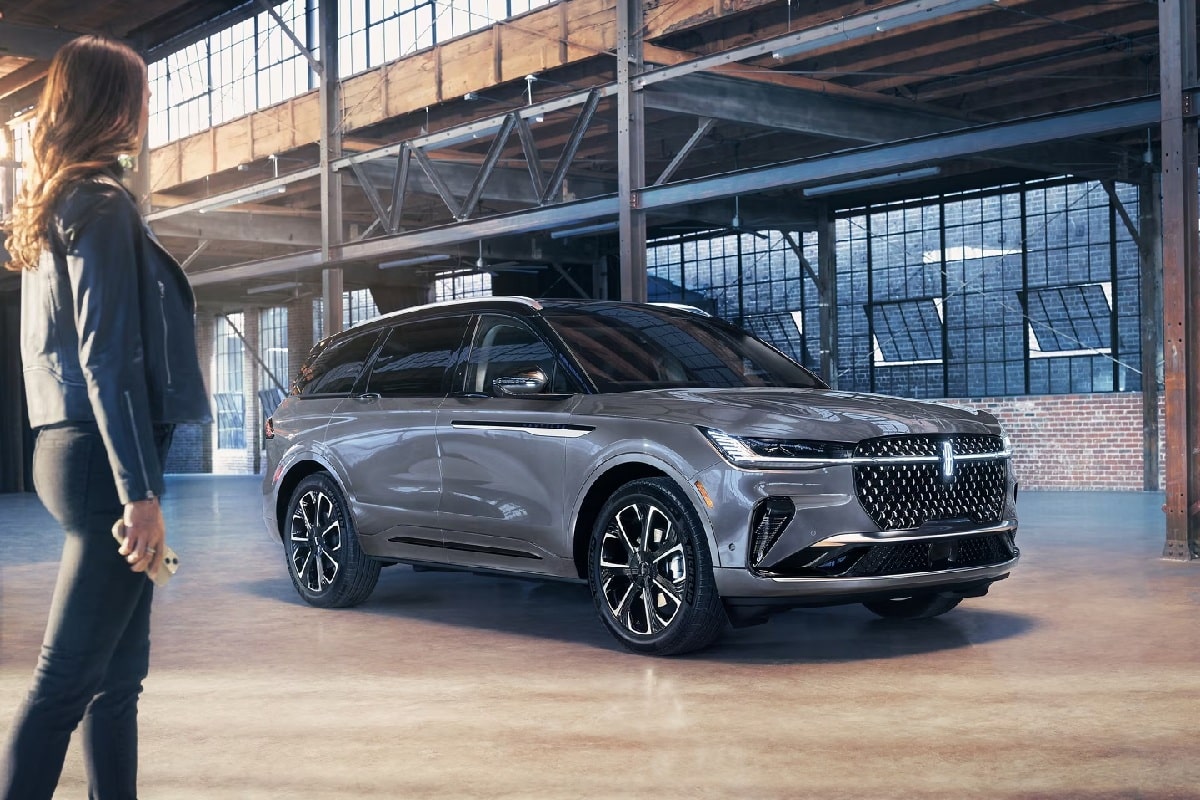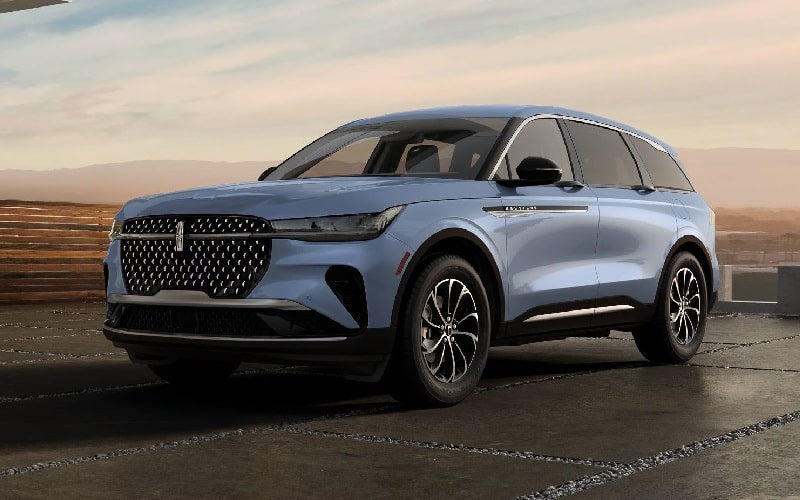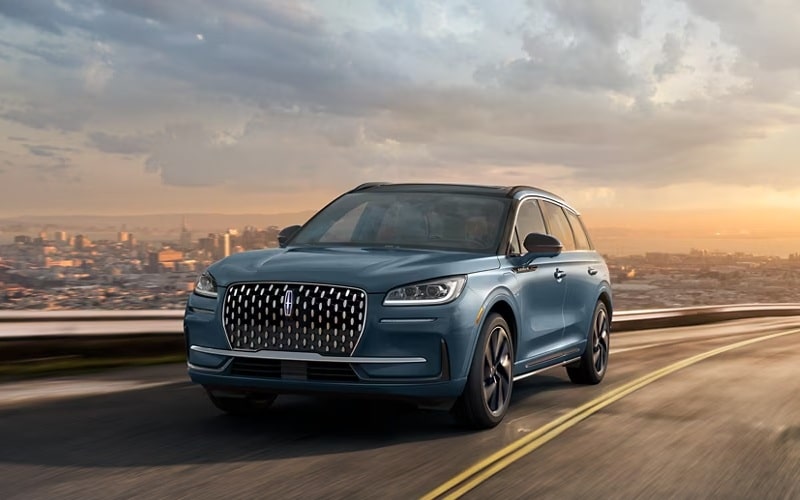The 2025 Lincoln Nautilus: An Analysis of Engine Options
The Lincoln Nautilus continues to evolve as a compelling option in the premium midsize SUV segment, with the latest model representing the newest iteration of the refined approach to Lincoln luxury mobility. As the automotive industry navigates the complex waters of efficiency regulations, consumer preferences, and technological advancements, the powertrain options available in the Nautilus […]
The Lincoln Nautilus continues to evolve as a compelling option in the premium midsize SUV segment, with the latest model representing the newest iteration of the refined approach to Lincoln luxury mobility. As the automotive industry navigates the complex waters of efficiency regulations, consumer preferences, and technological advancements, the powertrain options available in the Nautilus provide insight into the Lincoln engineering philosophy and market positioning strategy. From the standard turbocharged powertrain to the special-order hybrid option, the Nautilus offers a range of power solutions designed to meet diverse driver needs while maintaining the brand’s commitment to refined performance.

Standard Powertrain: The 2.0L EcoBoost
Technical Specifications
The Lincoln Nautilus comes standard with a 2.0-liter turbocharged inline-four engine across all trim levels. This EcoBoost powerplant delivers:
- Power output: 250 horsepower at 5,500 rpm
- Torque: 380 Nm (280 lb-ft) at 3,000 rpm
- Configuration: Direct-injected, turbocharged inline-four
- Construction: Aluminum block and cylinder head
- Transmission: 8-speed automatic transmission
- Drivetrain: Standard intelligent all-wheel drive (AWD)
The 2.0L turbocharged engine represents Ford Motor Company’s commitment to downsized, forced-induction powertrains that balance performance with efficiency. The twin-scroll turbocharger design minimizes lag, allowing for responsive acceleration across a broad rpm range. The direct injection system controls fuel delivery, enhancing combustion efficiency while contributing to the engine’s respectable power figures.
Performance Metrics
The standard powertrain configuration propels the Nautilus from 0 to 100 km/h in approximately 6.5-7.0 seconds—respectable performance for a vehicle in this class, especially considering its substantial dimensions and weight. The Nautilus weighs approximately 1,973 kg (4,350 lbs), making the powertrain’s ability to deliver confident acceleration all the more impressive.
The 8-speed automatic transmission provides smooth, well-timed shifts prioritizing refinement over sportiness, aligning with the luxury-first Lincoln philosophy. Paddle shifters mounted on the steering wheel allow for manual control when desired. However, the transmission’s well-calibrated logic means most drivers will likely leave it in automatic mode for daily driving.
Intelligent All-Wheel Drive
All Lincoln Nautilus models feature intelligent all-wheel drive as standard equipment. This system continuously monitors driving conditions using sensors and can seamlessly transfer power between the front and rear axles as needed. Under normal driving conditions, the system operates primarily in front-wheel drive to maximize fuel efficiency, but can instantly redirect torque to the rear wheels when additional traction is required.
The AWD system includes features like:
- Torque vectoring capabilities for enhanced cornering stability
- Integration with the vehicle’s stability control systems
- Brake-actuated limited-slip differential functionality
- Driver-selectable drive modes that alter powertrain response
Unlike some competitors that offer rear-biased AWD systems for a sportier driving character, the Nautilus employs a setup that prioritizes all-weather capability and sure-footed confidence over dynamic handling. This aligns with the vehicle’s positioning as a comfortable luxury cruiser rather than a sport-oriented SUV.
Fuel Efficiency
The 2.0L EcoBoost engine in the Lincoln Nautilus delivers respectable fuel economy figures for a vehicle in this class:
- City driving: 11.2 L/100 km
- Highway driving: 8.1 L/100 km
- Combined rating: 9.8 L/100 km
These efficiency metrics position the Nautilus competitively within the luxury midsize crossover segment, although it falls short of the exceptional economy some hybrid competitors offer. The engine runs on premium unleaded fuel for optimal performance, though it can operate on regular gasoline with a slight reduction in power output.
The Hybrid Powertrain Option
Availability and Positioning
The Lincoln Nautilus Hybrid represents a significant shift in availability strategy. While previously offered as a regular production option, the hybrid powertrain has transitioned to special-order status. This suggests strategically repositioning the electrified variant within the Lincoln lineup, perhaps in response to market demand patterns or production constraints.
Technical Specifications
The Nautilus Hybrid employs a sophisticated gas-electric powertrain consisting of:
- 2.5L naturally aspirated Atkinson-cycle four-cylinder engine
- Electric motor integrated into the transmission
- Lithium-ion battery pack
- Electronic continuously variable transmission (eCVT)
- Intelligent all-wheel drive system with electric rear axle
Total system output figures for the hybrid powertrain are approximately:
- Combined power: 310 horsepower
- Combined torque: 400 Nm
The hybrid system can operate in pure electric mode at lower speeds, with the gasoline engine engaging seamlessly when additional power is required or when the battery state of charge necessitates it. Regenerative braking captures energy during deceleration and braking events, converting kinetic energy into electricity to recharge the battery.
Performance Characteristics
The hybrid powertrain offers different performance characteristics than the standard 2.0L turbocharged engine. While the standard engine linearly delivers its power with a surge of torque when the turbocharger spools up, the hybrid system provides immediate electric torque from a standstill, resulting in brisk initial acceleration.
The 0-100 km/h acceleration time for the hybrid is comparable to the standard model at approximately 6.5 seconds, though the character of the acceleration differs significantly. The hybrid delivers a smoother, more seamless power delivery without the slight turbo lag experienced in the standard powertrain.
The eCVT transmission used in the hybrid model prioritizes efficiency over traditional shifting feel, maintaining optimal engine rpm for either performance or efficiency, depending on driving conditions and selected drive mode. While some drivers may miss the defined shift points of a conventional automatic transmission, the system’s seamless operation contributes to the refined driving experience that defines the Lincoln brand.
Efficiency Advantages
The primary advantage of the hybrid powertrain comes in the form of improved fuel efficiency:
- City driving: approximately 7.8 L/100 km
- Highway driving: approximately 7.6 L/100 km
- Combined rating: approximately 7.7 L/100 km
These figures represent a significant improvement over the standard powertrain, particularly in urban driving scenarios where the hybrid system can leverage electric propulsion more frequently. The nearly 30% reduction in fuel consumption during city driving makes the hybrid appealing for buyers who primarily navigate urban environments.
Engine Technology and Features
EcoBoost Technology
The 2.0L EcoBoost engine in the standard Nautilus employs several advanced technologies to enhance performance and efficiency:
- Direct Fuel Injection: Precisely delivers fuel directly into the combustion chamber at high pressure, improving combustion efficiency and reducing emissions.
- Twin-Scroll Turbocharger: Separates exhaust pulses from different cylinders to reduce turbo lag and improve low-end torque response.
- Variable Valve Timing: Adjusts valve opening and closing events based on engine load and rpm, optimizing combustion across the operating range.
- Auto Start-Stop: Temporarily shuts down the engine during idle situations (like traffic lights) to reduce fuel consumption and emissions.
- Integrated Exhaust Manifold: Cast into the cylinder head to reduce weight and improve thermal efficiency by bringing the catalytic converter to operating temperature more quickly.
Hybrid System Innovations
The hybrid powertrain incorporates several advanced technologies:
- Atkinson Cycle Operation: The 2.5L engine employs Atkinson cycle valve timing, which keeps intake valves open longer than in conventional engines, improving thermal efficiency at the expense of some low-end torque (which is compensated for by the electric motor).
- Regenerative Braking: Captures kinetic energy during deceleration and braking, converting it to electricity to recharge the battery.
- Electric Power-Assisted Steering: Utilizes an electric motor rather than hydraulic pressure for steering assistance, reducing parasitic losses on the engine.
- Active Grille Shutters: Automatically close at higher speeds to improve aerodynamics, reducing drag and improving fuel economy.
- Intelligent Battery Management: Continuously optimizes battery charging and discharging based on driving conditions, temperature, and energy demands.
Driving Experience and Character
Refinement as a Priority
Both powertrain options in the Lincoln Nautilus prioritize refinement over outright sportiness, aligning with the “Quiet Flight” Lincoln brand ethos. Extensive sound deadening, active noise cancellation technology, and careful calibration of engine mounts contribute to an exceptionally quiet cabin environment, regardless of engine speed or load.
The standard 2.0L turbocharged engine delivers its power smoothly, linearly, with minimal vibration transmitted to the cabin. Under hard acceleration, the engine note remains subdued and distant, never intruding on the luxury experience. The 8-speed automatic transmission shifts unobtrusively, prioritizing smooth gear changes over rapid engagement.
The hybrid powertrain takes this refinement a step further, with the ability to operate in pure electric mode at lower speeds, eliminating engine noise in certain driving scenarios. The transitions between electric and gasoline power are nearly imperceptible, occurring without the shudder or hesitation that characterized earlier hybrid systems.
Drive Modes and Adaptability
Both powertrain options feature multiple drive modes that alter engine response, transmission behaviour, and steering feel to suit different driving conditions and preferences:
- Normal: Balanced everyday driving with moderate throttle response
- Conserve: Optimized for maximum fuel efficiency
- Excite: Sharpened throttle response and more aggressive transmission shift patterns
- Slippery: Calibrated for confident operation on wet or icy surfaces
- Deep Conditions: Optimized for deep snow or sand
In the hybrid model, these drive modes also influence the balance between electric and gasoline power usage, with Conserve mode maximizing electric operation when conditions permit.
Comparison with Key Competitors
The Lincoln Nautilus competes in a segment populated by established luxury brands, each with its approach to powertrain engineering. Key competitors include:
Audi Q5
- Base engine: 2.0L turbocharged four-cylinder (261 hp)
- Optional engine: Plug-in hybrid with 2.0L turbo (362 hp combined)
- The Q5 offers more power in its base configuration, but similar hybrid capabilities
BMW X3
- Base engine: 2.0L turbocharged four-cylinder (248 hp)
- Optional engine: 3.0L turbocharged six-cylinder (382 hp)
- The X3 emphasizes driving dynamics with a more powerful optional engine
Lexus RX
- Base engine: 2.4L turbocharged four-cylinder (275 hp)
- Optional engines: Various hybrid configurations (246-366 hp)
- The RX offers more electrification options but similar base power
Mercedes-Benz GLC
- Base engine: 2.0L turbocharged four-cylinder (255 hp)
- Optional engines: Various mild hybrid and plug-in hybrid options
- The GLC provides similar power but with mild hybridization standard
The Nautilus positions itself with competitive power figures from its standard engine, while offering hybrid technology that rivals established players in the luxury segment. It differentiates itself in its focus on quiet, refined operation rather than sporty driving dynamics, appealing to buyers who prioritize comfort over corner-carving capabilities.
2025 Lincoln Nautilus: The Complete Luxury Experience
The Lincoln Nautilus engine lineup reveals much about the brand’s engineering philosophy and market positioning. Rather than chasing maximum horsepower figures or promoting track-ready performance, Lincoln has crafted powertrain options prioritizing refinement, effortless power delivery, and day-to-day usability.
The standard 2.0L EcoBoost engine provides ample power for confident everyday driving, while the special-order hybrid option offers significant efficiency improvements without compromising the luxury experience that defines the brand. Both powertrains benefit from thoughtful integration with the vehicle’s other systems, resulting in a cohesive driving experience emphasizing calm, confident progress over frenetic sportiness.
As the automotive industry continues its gradual transition toward electrification, the Lincoln Nautilus represents an interesting middle ground, embracing turbocharged efficiency and optional hybridization while maintaining focus on the traditional luxury values that have defined Lincoln for generations. The result is a vehicle that feels thoroughly modern in its technical execution while remaining true to the brand’s heritage of refined American luxury.


